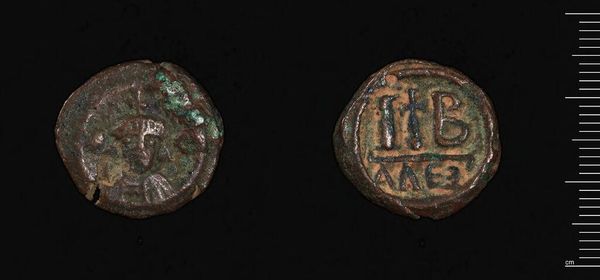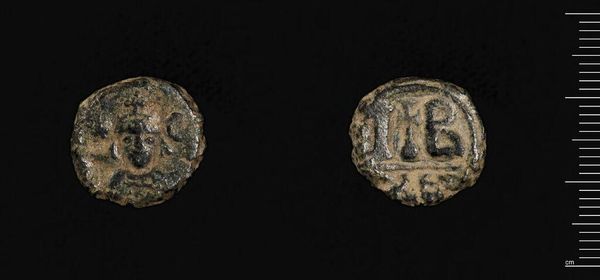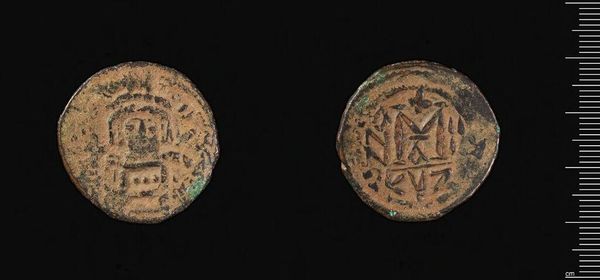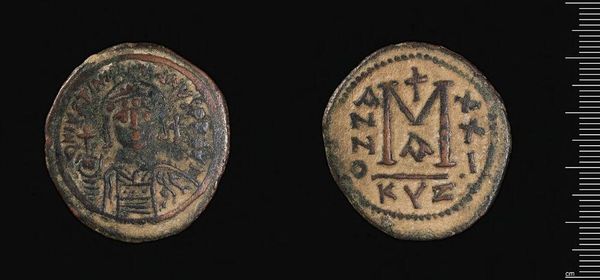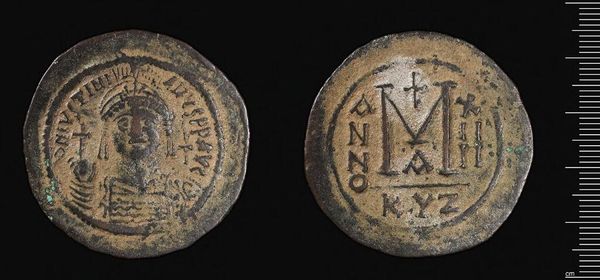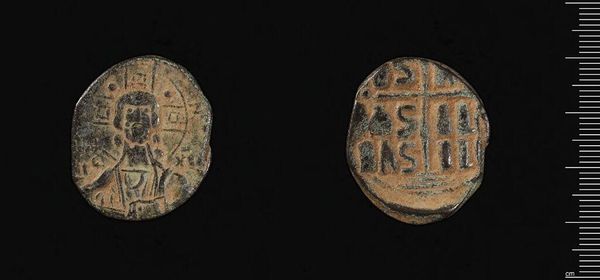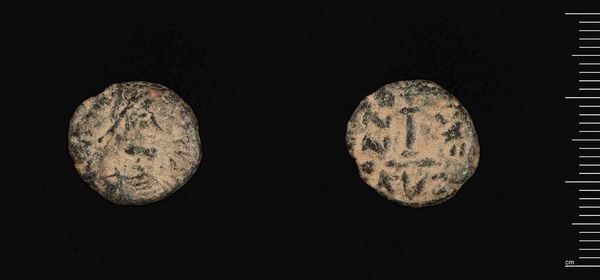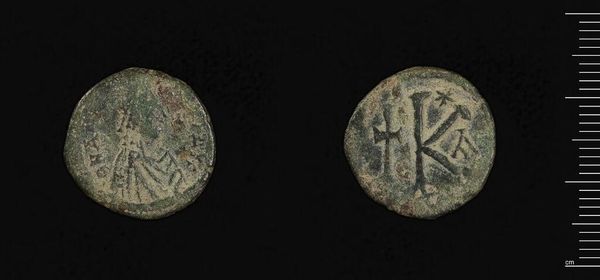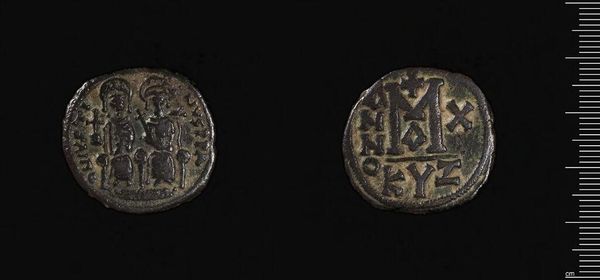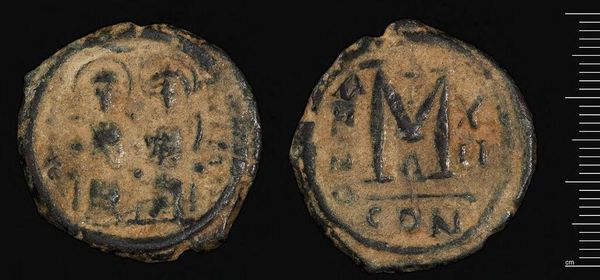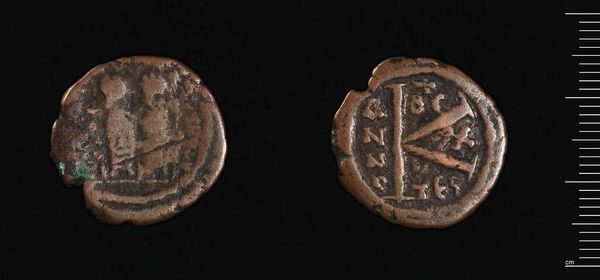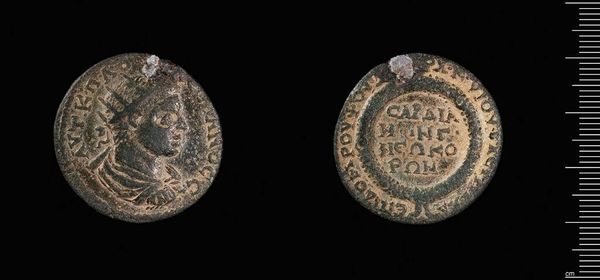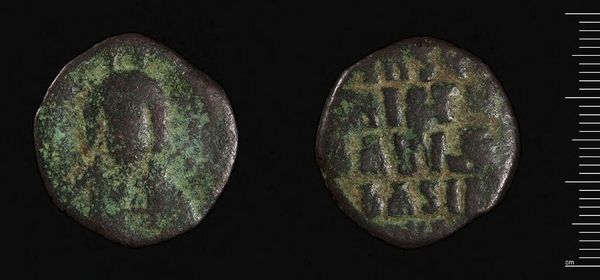
Follis of Maurice Tiberius, Kyzikos 583 - 585
Dimensions: 10.64 g
Copyright: CC0 1.0
This copper follis coin was created during the reign of Maurice Tiberius, around the late 6th century CE, in the city of Kyzikos, now part of modern-day Turkey. The coin serves as a potent reminder of the political and economic strategies that underpinned the Byzantine Empire. On one side, we see a stylized portrait of Maurice Tiberius, embodying the authority of the emperor. The reverse bears a prominent 'M', the Greek numeral for 40, indicating the coin’s value in nummi. Above, a cross symbolizes the pervasive influence of Christianity in the empire. 'KYZ' refers to the mint in Kyzikos. The creation and circulation of coinage were closely managed by the state, making it a powerful tool for disseminating imperial imagery and asserting control over the economy. To understand its full significance, you would need to examine Byzantine monetary policy of the time, along with the archaeological record from Kyzikos and the wider empire. By studying such objects, we can gain insight into the social, political, and economic life of a long-vanished world.
Comments
No comments
Be the first to comment and join the conversation on the ultimate creative platform.
